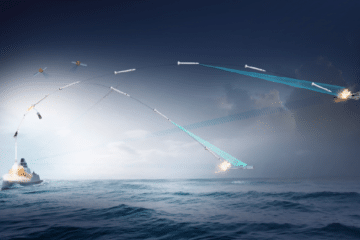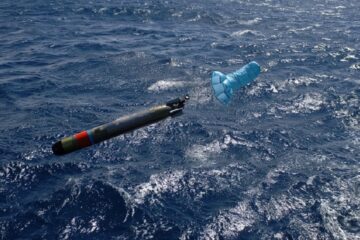LIG Nex1 press release – Translated by Naval News
The development of the Lightweight Torpedo II system is a project to improve the detection and attack capabilities of current Lightweight Torpedoes (Blue Shark) mounted on surface ships that attack enemy submarines.
The Lightweight Torpedo II isn’t only capable of reacting to the enemy’s developing deception, but can also attack quickly and accurately from a distance, allowing it to hit a target with precision.
This project is one of the projects that the Defence Agency has transitioned from the Defence Science Research Institute to enterprise-led R&D as part of the “Reform of the Defence Research System”. The National Research Institute provides technical support, such as transferring the technology needed for development to LIG Nex1 and the advice needed to make technical decisions. DAPA also plans to promote the project in a way that achieves close collaboration with related organisations such as ADD and Soyo-gun.
The LIG Nex1 plans to actively incorporate the latest technology trends based on stealth, such as the development of a new acoustic detection sensor to enhance the detection and attack capabilities of the light torpedo II against enemy submarines. This is expected to enable effective deployment and significantly increase the survivability of friendly vessels.
About LIG Nex1 Blue Shark LW Torpedo

The K745 Blue Shark is a light anti-submarine torpedo developed for the Republic of Korea Navy in 2004. The Blue Shark torpedo can be deployed from surface ships, ASW helicopters and maritime patrol aircraft.
According to the company brochure, Blue Shark is a precision-striking weapon that provides target tracking by homing from the moment of launch in anti-ship operations.
The torpedo can be operated in two modes: One is the direct search mode, in which the Blue Shark is launched from a surface ship or dropped from a helicopter and strikes the target in a circular and spiral pattern from the searched point; the other is the non-direct search mode, in which the target is struck by activating active search after diving into a safe launch area while moving by helicopter or maritime patrol aircraft. The system can be installed and maintained on a new ship (launcher, tube) and can be included in a warship’s export package.
Key Data:
- Mass: 280 kg
- Length: 2.7 m
- Width: 0.32 m
- Operational range: 19 km
- Maximum speed: 45+ knots
- Guidance system: Acoustic






